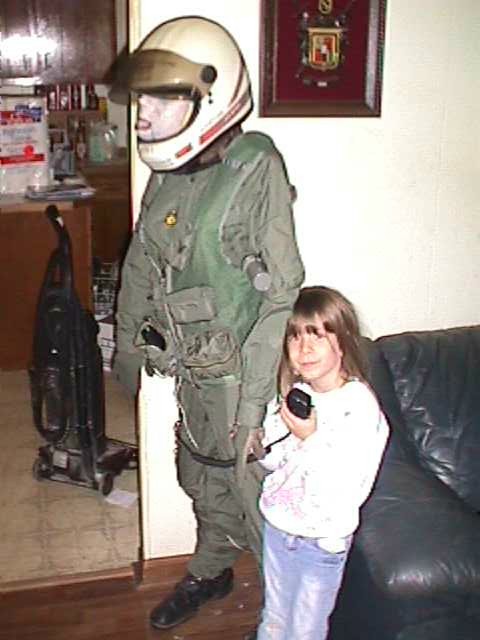

ARE AUTOMATED KILLER ROBOTS A THREAT TO HUMANITY?
Washington plans to spend four billion dollars by 2010 on unmanned technology systems, with total spending expected rise to 24 billion, according to the Department of Defense's Unmanned Systems Roadmap 2007-2032, released in December.
James Canton, an expert on technology innovation and CEO of the Institute for Global Futures, predicts that deployment within a decade of detachments that will include 150 soldiers and 2,000 robots.
The use of such devices by terrorists should be a serious concern, said Sharkey.
Captured robots would not be difficult to reverse engineer, and could easily replace suicide bombers as the weapon-of-choice. "I don't know why that has not happened already," he said.
But even more worrisome, he continued, is the subtle progression from the semi-autonomous military robots deployed today to fully independent killing machines.
"I have worked in artificial intelligence for decades, and the idea of a robot making decisions about human termination terrifies me," Sharkey said.
Do you think automated killer robots are a threat to humanity? Agence France-Presse Published: Wednesday February 27, 2008
Increasingly autonomous, gun-toting robots developed for warfare could easily fall into the hands of terrorists and may one day unleash a robot arms race, a top expert on artificial intelligence told AFP.
"They pose a threat to humanity," said University of Sheffield professor Noel Sharkey ahead of a keynote address Wednesday before Britain's Royal United Services Institute.
Intelligent machines deployed on battlefields around the world -- from mobile grenade launchers to rocket-firing drones -- can already identify and lock onto targets without human help.
There are more than 4,000 US military robots on the ground in Iraq, as well as unmanned aircraft that have clocked hundreds of thousands of flight hours.
The first three armed combat robots fitted with large-caliber machine guns deployed to Iraq last summer, manufactured by US arms maker Foster-Miller, proved so successful that 80 more are on order, said Sharkey.
But up to now, a human hand has always been required to push the button or pull the trigger. It we are not careful, he said, that could change. Military leaders "are quite clear that they want autonomous robots as soon as possible, because they are more cost-effective and give a risk-free war," he said.
Several countries, led by the United States, have already invested heavily in robot warriors developed for use on the battlefield. South Korea and Israel both deploy armed robot border guards, while China, India, Russia and Britain have all increased the use of military robots.
Ronald Arkin of Georgia Institute of Technology, who has worked closely with the US military on robotics, agrees that the shift towards autonomy will be gradual. But he is not convinced that robots don't have a place on the front line. "Robotics systems may have the potential to out-perform humans from a perspective of the laws of war and the rules of engagement," he told a conference on technology in warfare at Stanford University last month. The sensors of intelligent machines, he argued, may ultimately be better equipped to understand an environment and to process information. "And there are no emotions that can cloud judgement, such as anger," he added. Nor is there any inherent right to self-defence.
For now, however, there remain several barriers to the creation and deployment of Terminator-like killing machines. Some are technical. Teaching a computer-driven machine -- even an intelligent one -- how to distinguish between civilians and combatants, or how to gauge a proportional response as mandated by the Geneva Conventions, is simply beyond the reach of artificial intelligence today.
But even if technical barriers are overcome, the prospect of armies increasingly dependent on remotely-controlled or autonomous robots raises a host of ethical issues that have barely been addressed.
Arkin points out that the US Department of Defense's 230 billion dollar Future Combat Systems programme -- the largest military contract in US history -- provides for three classes of aerial and three land-based robotics systems. "But nowhere is there any consideration of the ethical implications of the weaponisation of these systems," he said. For Sharkey, the best solution may be an outright ban on autonomous weapons systems. "We have to say where we want to draw the line and what we want to do -- and then get an international agreement," he said.

Our Nicki2a Theatrical Android dressed in Stargate SG1 costume, just returned from the Louisville Military ball.
Theatrical Android early stage modeling.
Theatrical Android Nicki 2 (N2) finished.
Perhaps you need virtual customers?
How a Beowulf "Global Supercomputer works.
Bio-medical uses for robotics.
Quantum Supercomputer, the future Android Positronic Brain.
Build your robot lab, or science fiction set, buy one of our oscilloscopes.
I ask my Android about the emotions relating to love.
Getting into a robotic view of the world.
For more information on buying or renting theatrical Androids call Robert Colee 678-887-2216.